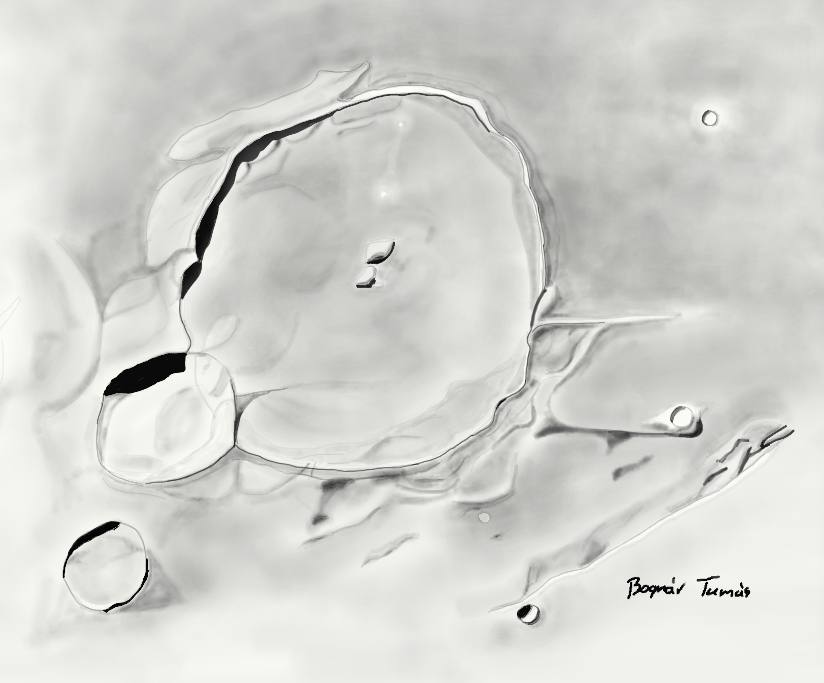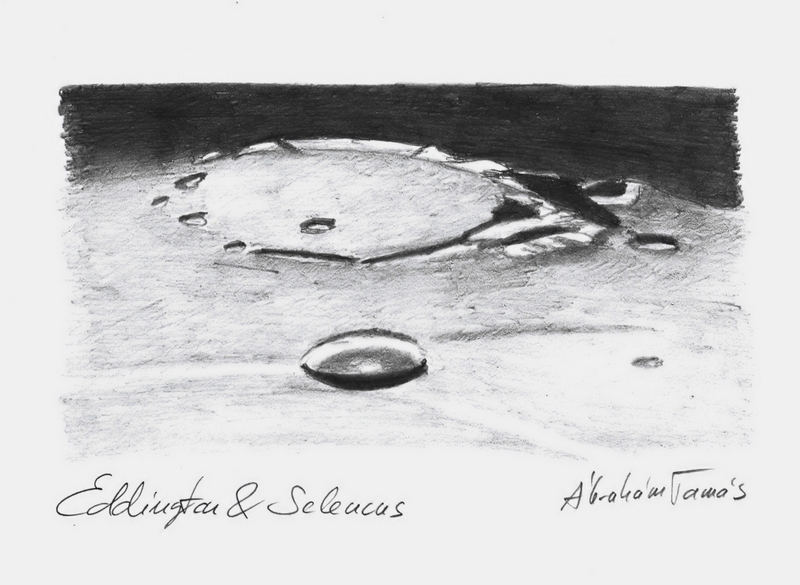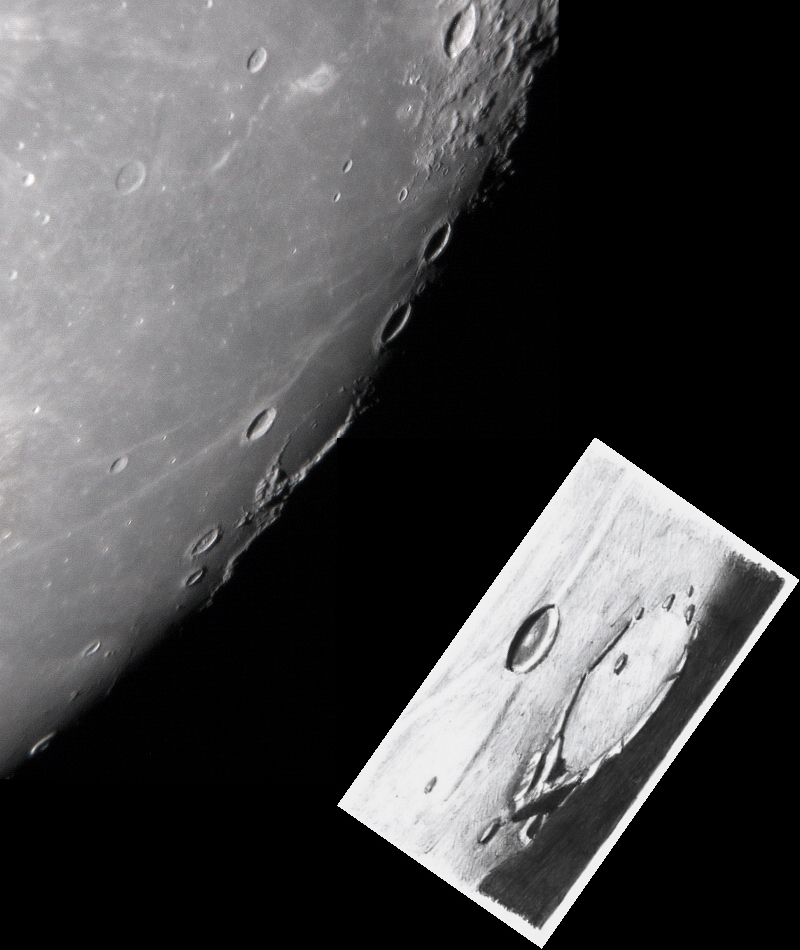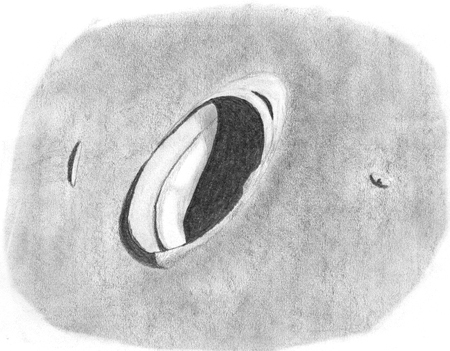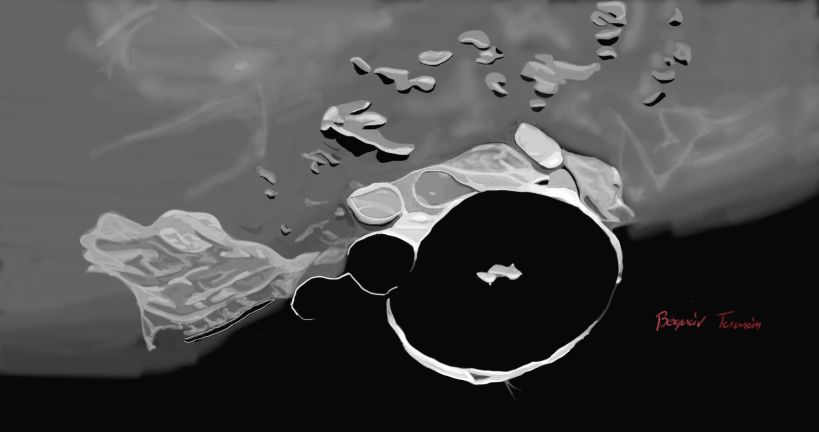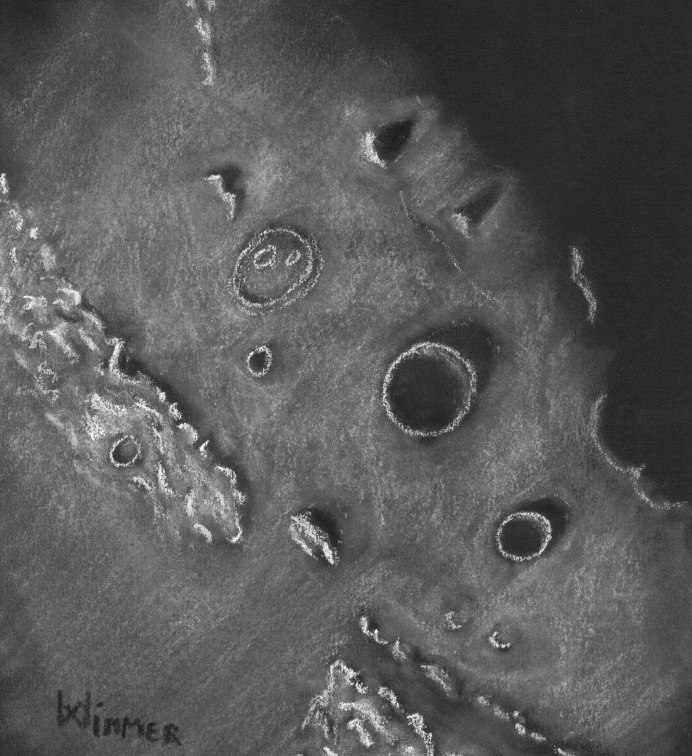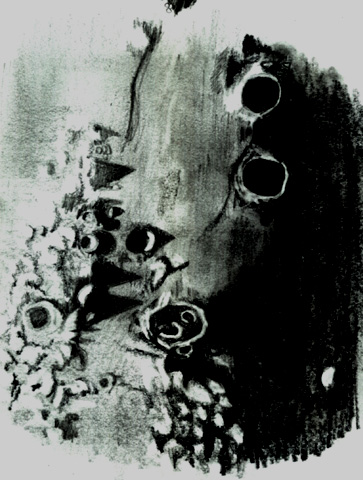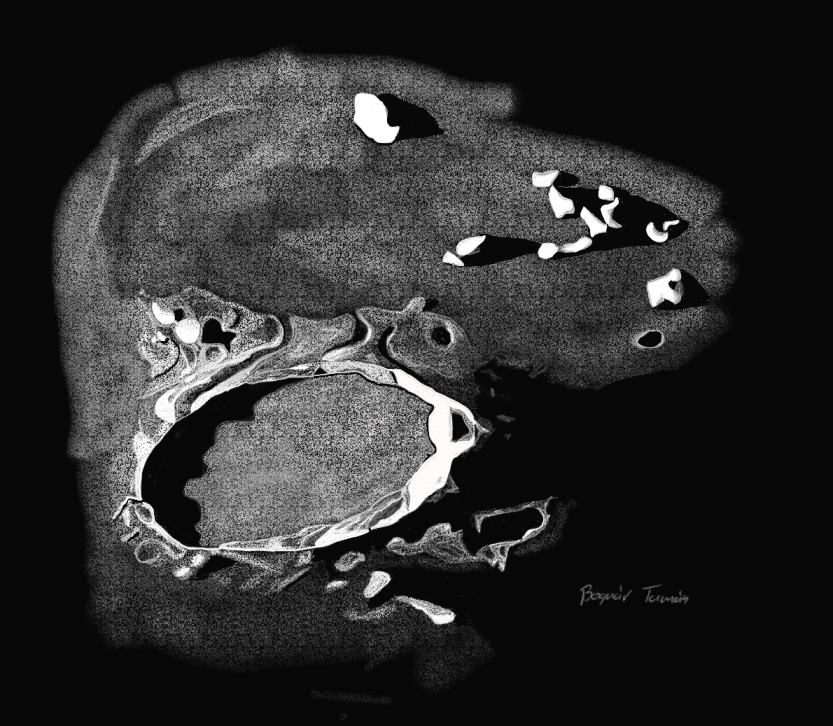
Lunar craters Theophilus, Cyrillus and Catharina
Sketch and Details by Dirk Dehnert
Object Name: Theophylus, Cyrillus, and Catharina
Object Type: Lunar crater
31.03.2009 19:30 to 20:10 Central European Summer Time
Seeing was 6/10. Transparency was 8/10.
Optics: Zenithstar II ED Refractor (80/555 mm)
William Optics 99% Diagonal
1.7 Corrector for my Maxbright Bino
12 mm Plössl Eyepieces
Resulting magnification about 78 times.
Just to relax after work I sat down and sketched this view of the moon
while my children were watching TV. I didn’t plan to sketch those
craters. I looked all over the moon and picked those three craters
Theophylus, Cyrillus, and Catharina because of their beautyful view.
I even didn’t know what area I sketched until I looked up in a moon
atlas;) I prepared a rough sketch using Faber Castell blacklead
pencils on ordinary white office paper. Later on I worked out the
details with eraser and wiper. All in all I spent about 90 minutes for
the complete sketch.
I hope you enjoy it.
Regards,
Dirk Dehnert
Riedstadt, Germany
Note: This is Dirk’s first sketch of the Moon.


